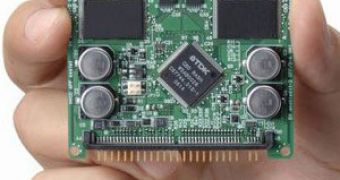Last year, the price for NAND flash memory dropped by as much as 60 percent, automatically plummeting the prices for devices that used them. As technology evolves adding price for different aspects, the same process is likely to be repeated this year, by almost the same margin.
Analysts believe that "prices of NAND flash memory could plummet this year because of weak demand and an oversupply in the market," says PC Advisor. Nam Hyung Kim, director and chief memory analyst for iSuppli, is quoted as saying that "if concerns about the US economy deepen, consumers may reduce spending on phones, iPods and the other devices that use NAND flash, weakening demand for the chips and depressing prices," predicting that prices could fall by as much as 55 percent this time around.
Another clue to the huge price drop for flash memory is Apple's already dropping the price of its 1GB iPod Shuffle this week, while the Cupertino folks also introduced a 2 GB version of the respective iPod model, at just $69.
"Flash pricing definitely has an impact in terms of giving Apple the ammunition to be able to lower price points," said Shaw Wu, an analyst with American Technology Research, adding that Apple could have made this move a long time ago, hinting at the huge price drop for NAND in 2007.
Given the facts, Apple is not far from dropping the price on its other NAND-enabled devices, such as the iPod nano, iPhone and oh no... I dare not say (Eh, the heck with it, it's not like I'm going to get hit by lighting). The MacBook Air!
Think about it: $1,500 for the solid state drive option...? That's less than what you pay for a HDD Air today - $1,799.
Let's just dare dream of a 50 percent price cut for the iPod and iPhone for now.

 14 DAY TRIAL //
14 DAY TRIAL //